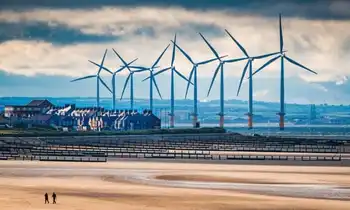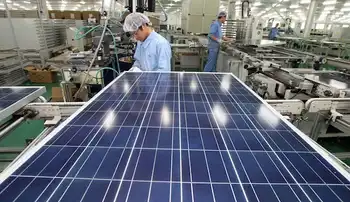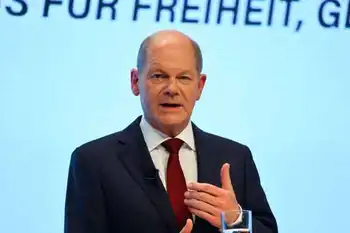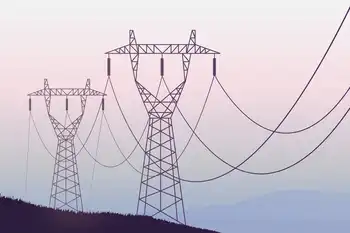Man finds freedom converting car into an EV
By Santa Fe New Mexican
CSA Z463 Electrical Maintenance
Our customized live online or in‑person group training can be delivered to your staff at your location.

- Live Online
- 6 hours Instructor-led
- Group Training Available
But when Lake climbs into the old aerodynamic car and turns the key, it's another story.
"It's a wild-looking car," Lake said happily of the car he bought to convert into an electric car. The silver car, while it's not a DeLorean, looks like it would be able to pass for the car from the Back to the Future movies. It's silver and on driver's side door, Lake wrote out the car's title, EVII, with black electrical tape. "I thought that would be fitting - electrical tape for an electric car," he said.
On a sunny but cool Friday morning, Lake decided to take the old girl out for a spin. He climbed in and adjusted a detachable screen that flashed all sorts of high-tech information regarding the car's battery once he turned the key to the "on" position. Lake said much of the information regarding how much juice the battery has left is wrong because some wires are crossed, but until the day comes where he'll fix that, he just knows how long the battery has before it needs to be recharged.
Then he put the car into drive and took off up his rocky, La Cienega driveway, past his somewhat-new Toyota Corolla and made a right out of his property. When he saw his neighbor, he pressed the brake and the battery immediately stopped.
"This is my electric car," he proudly said to his neighbor before waving goodbye and turning back to go home. "It was a short ride," he said with a laugh.
Maybe, but it took Lake two years to be able to convert the vehicle to an electric car.
It was curiosity that led Lake to convert his car. He watched a movie called Who Killed the Electric Car? The Sony Classics Web site, which promotes the film, noted that electric cars became immensely popular in California the mid-1990s, but then died out. The film explores why this happened.
"They didn't come to any conclusions," Lake explained.
Lake was particularly taken with the now-defunct EVI that used to be produced by General Motors. Lake said he was baffled when the EVI was recalled and pulled from the market, considering it was a a "pretty good car."
The woodworker didn't know anything about mechanics, so two years ago, he ordered a kit that came with a book on how to do it, titled Convert It by Michael P. Brown and Shari Prange. He had had an old Subaru that he could have converted, but he didn't think it would work. The book included a list of cars that had previously been converted, and the Mazda RX-7 was one of them.
"I just liked the looks of it," Lake said. So he went online, purchased one from California and hired somebody to drive it to Santa Fe so he could began his journey. Since he is not a mechanic, he didn't want to mess with the internal combustion engine, so he hired a buddy to remove that, the muffler and the gas tank. Then Lake bought 10 lithium-ion batteries and got to work.
"The best thing is I'm free of the gas companies," Lake said. "I feel really good about that."
Lake had the time and money for the project, and he recommends that everybody do it.
"This one has a lot of benefits," Lake said of his car. The overall cost - including batteries, the cost of the car, cost of the kit and cost of labor - was about $15,000, which Lake said is close to what he paid for his Toyota Corolla, which he rarely uses. Now is the time, he said.
"Right now, the batteries have come down in cost almost 40 percent," Lake explained. "You can buy a new Corolla or you can buy the parts and the batteries for an electric car."
While most people have to take in their car about every 3,000 miles for an oil change, Lake can spend that time doing other things. Also, gas stations rarely get Lake's business anymore.
"The repairs are almost nonexistent," Lake said. "It's faster than the Corolla; it has quicker acceleration; it's quiet, it doesn't pollute and I don't have to go to the gas station. It's just very, very cool."
The only repairs the car needs are minor, like replacing the windshield wipers, he added.
The last two years did not pass by without any challenges - such as getting the motivation to work on the car. Lake said he took his time because of his age, 70.
"It was hard to get up and work on it," the retiree said.
What makes the EVII different from other electric cars is that it uses lithium-ion-potassium batteries from China, which he ordered from online dealers. Lake said most other cars use nickel-metal-hydride batteries. It's because of this special battery that his car is able to travel up to 60 miles and with speeds up to 100 miles an hour.
"Any skeptics can take a demo with me to verify that this car is good, or better and faster, than a regular internal-combustion engine car without the noise, pollution and gasoline consumption," Lake wrote in an email.
This will be the car's first New Mexico winter. Since the batteries are sensitive to cold, Lake has made a special place in his garage for the EVII that won't let the batteries get colder than 42 degrees.
The only drawbacks to the car are that he can't tow anything with it and he will not travel further than 60 miles because he isn't sure how long the battery will last - but that doesn't stop his desire to see more electric cars on the road.
"The (cost of) batteries has come down and it should come down more," Lake said. "I think it's a deal, but you have to do it yourself. The companies will not make this car. You have to get your kit and do it yourself."











